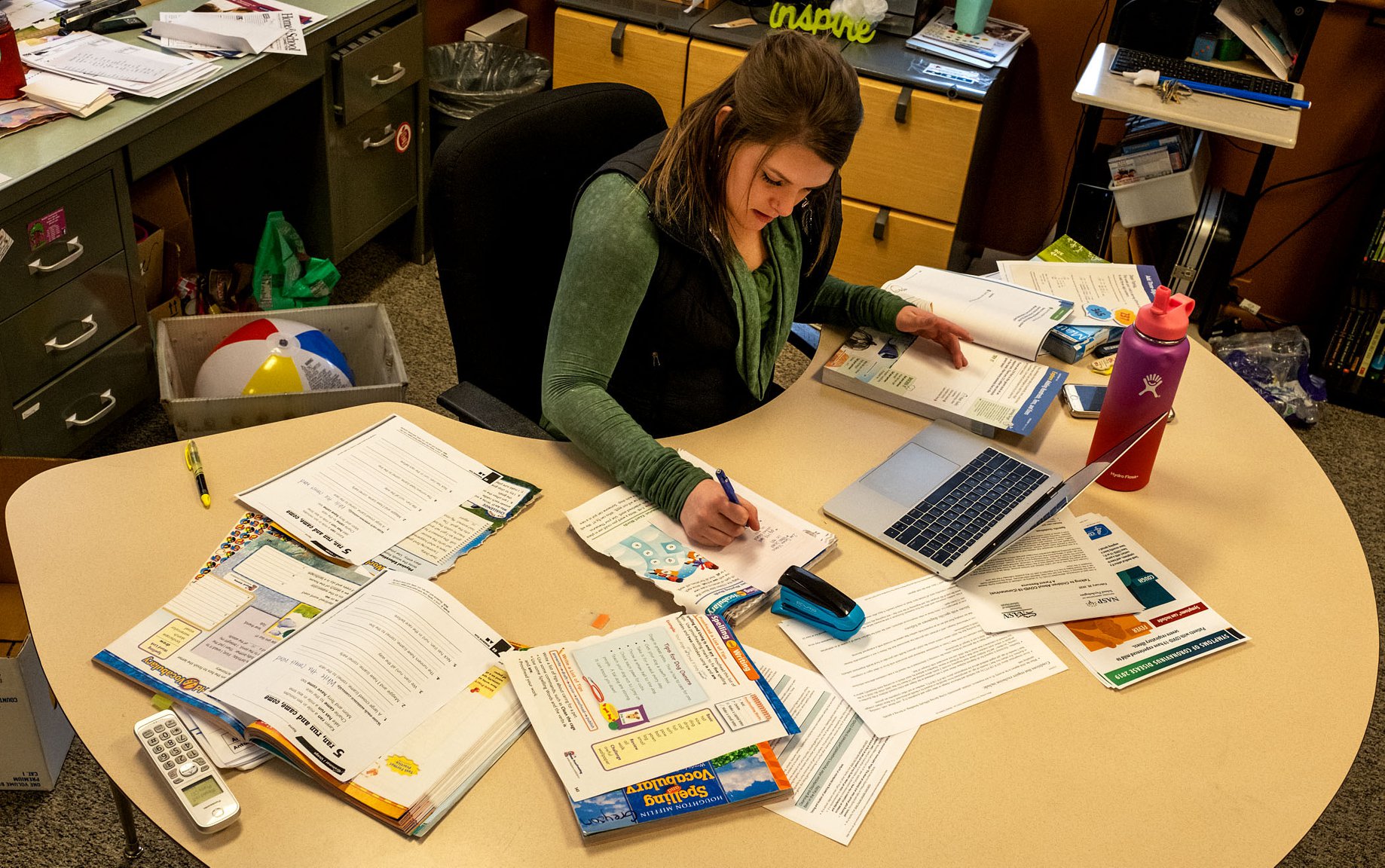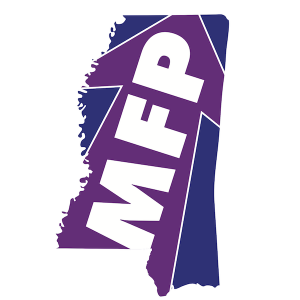On Sunday evening, March 15, Jefferson High School Superintendent Tim Norbeck had just arrived at home. He had canceled a motorcycling vacation with friends in the Southwest; that was to have been his first break ever during a school year
But the world had turned upside down. Amid the accelerating spread of the global coronavirus pandemic, the first few cases of COVID-19 in Montana had emerged a few days earlier. That afternoon, Norbeck had met with county public-health officials and other school leaders “just to see if we were on the same page” if schools had to shut down.
That prospect became real sooner than most had thought: At about 7:30 p.m., Gov. Steve Bullock ordered every public school in the state to close for two weeks beginning the next day, Monday.
Bullock didn’t provide further instructions, except that schools would figure out how to continue supplying free meals for students who needed them, and that they would “engage in planning to provide … all other matters and services that students need in the event of future or ongoing closure.”
This is the story of how the area’s schools responded to that stark but vague directive, contacting students and parents, experimenting with online instruction platforms, assembling homework packets, packing meals, delivering computers, distributing musical instruments—everything it took to get classes restarted within 72 hours.
MONDAY, MARCH 16: Teachers Drive Response
The word got out via emails, phone trees and social media: There would be no school today. Still, Daryl Mikesell, the K-2 and 6-8 principal at Montana City School, drove all the bus routes first thing, just to make sure no kids were waiting. “And they weren’t.”
“Then,” Mikesell said, “we started looking at big picture.” He and Cory Trudeau, the principal for third through fifth grade, wanted to let teachers drive the response. Everyone met in the gym, so people could spread out.
“We asked teachers to start with the content standards and then work backwards,” Trudeau said. Teachers had to figure out what sort of work could be done independently at home, wherever possible with tools and platforms students already were used to. They were instructed to make instruction consistent across each grade, rather than coming up with independent lesson plans, to prevent parents from getting confused.
At Jefferson High, teachers and staff gathered in the library with Principal Mike Moodry. “I spelled out my expectations,” Moodry said. “I said, I know this is going to be different for all of us. But the expectation is, we need to deliver curriculum to our students. However you guys can get that done, I don’t care how you do it.”
The first two weeks’ assignments would go out that evening, so teachers dug in. Science teacher Mary Williams figured out how to embed Peardeck, a digital learning platform she uses in class, into Zoom, a widely used teleconferencing application. With his usual in-person labs out of the question, David Heimann developed an assignment to refocus his welding students: They would explore career opportunities by locating employers in the area that hired welders, and then call—actually call, not text—those companies to learn what those jobs entailed and what skills they required.
Meanwhile, the school’s “paras” Lisa Fjeldseth, Jenn Scott, Lynnsey Williams, Katie Watts, and Ester Kirsch—set to work. Paraprofessionals normally help out with a wide range of classroom duties. Today, they were tasked with verifying contact information for every student at the school, then entering emails, phone numbers, and street addresses into a database that would allow teachers to send assignments and stay in touch.
Lorie Carey, the school’s business manager, asked County Attorney Steve Haddon to review the current contract with Harlow Transportation to provide school bus service. Those buses won’t be running, so JHS wants to reduce its payments, but Harlow still has to pay its drivers and maintain the vehicles. “Our goal is to make it as fair to (Harlow) as possible,” Carey said.
Meantime, Norbeck looked over a model memorandum of understanding to address the school’s relationship with teachers. The existing contract with staff doesn’t cover remote instruction, so for now, teachers were basically working on a handshake. It’s not an immediate problem, but the MOU would address that unforeseen gap.
TUESDAY, MARCH 17: Personal Connections
Boulder Elementary School had scheduled Monday as a day off, so this was its Day One. Teachers called parents of each of their students; “It’s important at a time like this to make those personal connections,” Principal Maria Pace said. The school’s counselor, Jason Sullivan, and others delivered learning packets to every student, as well as computers to those who needed them for online work.
At the Basin School, teachers decided against computers. The tiny school, with just 22 students in grades K-6, serves a lower-income community where many don’t have broadband access. “So, we just created a week’s worth of work for our kids,” supervising teacher Stephanie Listoe said.
Each day, there’s a reading activity, writing, math, and either science or social science. For the first week, Listoe said, “we just sent out review work, no new concepts. That’s what we’re going to have to work on now, finding a way to deliver new content.”
The problem of connectivity was more complex at Jefferson High. Of 284 students, 65 opted to receive their assignments on paper, picked up and dropped off at the school every Tuesday. Some have computers but no Internet service; they collected their work on USB thumb drives. The rest will work online: They go to a shared online document that lists links to assignments for every teacher.
That means “teachers are having to teach in three modes,” Moody said. “Great teachers are able to adapt their style to different modes.” Still, doing all three requires a lot of preparation, not to mention coming into school once a week to collect finished work and drop off new assignments. And it means that students won’t all be learning in the same way, at the same time.
Jefferson High had to be cleaned. Every inch. “We’re going through every single thing,” said Dan Sturdevant, who directs a crew of three custodians. “We’re doing the gymnasium, toilets, lockers. Oh, man. Heating vents, ducts, walls, floors. Door handles. First, a cleaning. Then we spray with disinfectant. It goes everywhere.” His suppliers tell him they’re out of the disinfectant solution; everyone is ordering it.
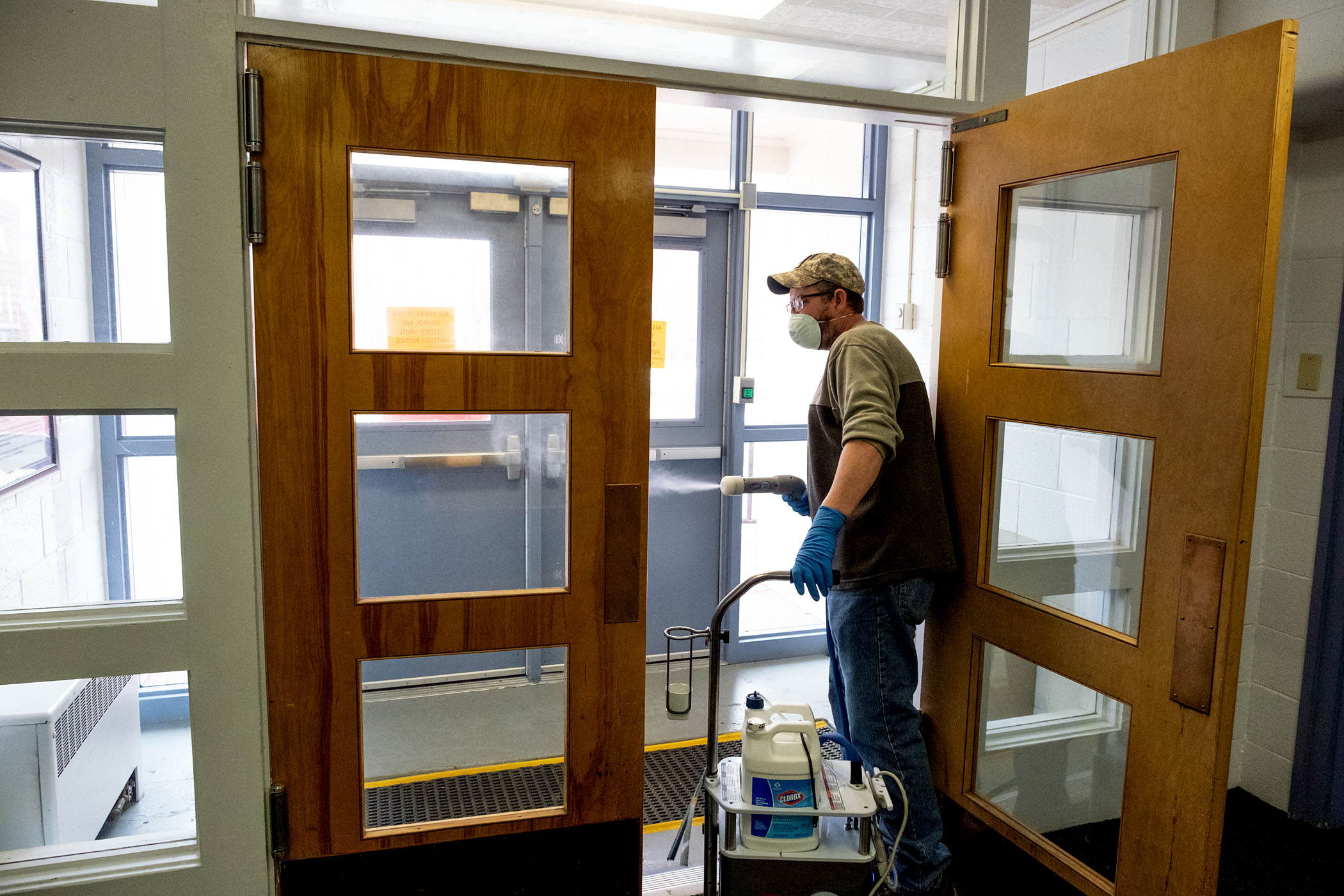
Blodgett/Boulder Monitor)
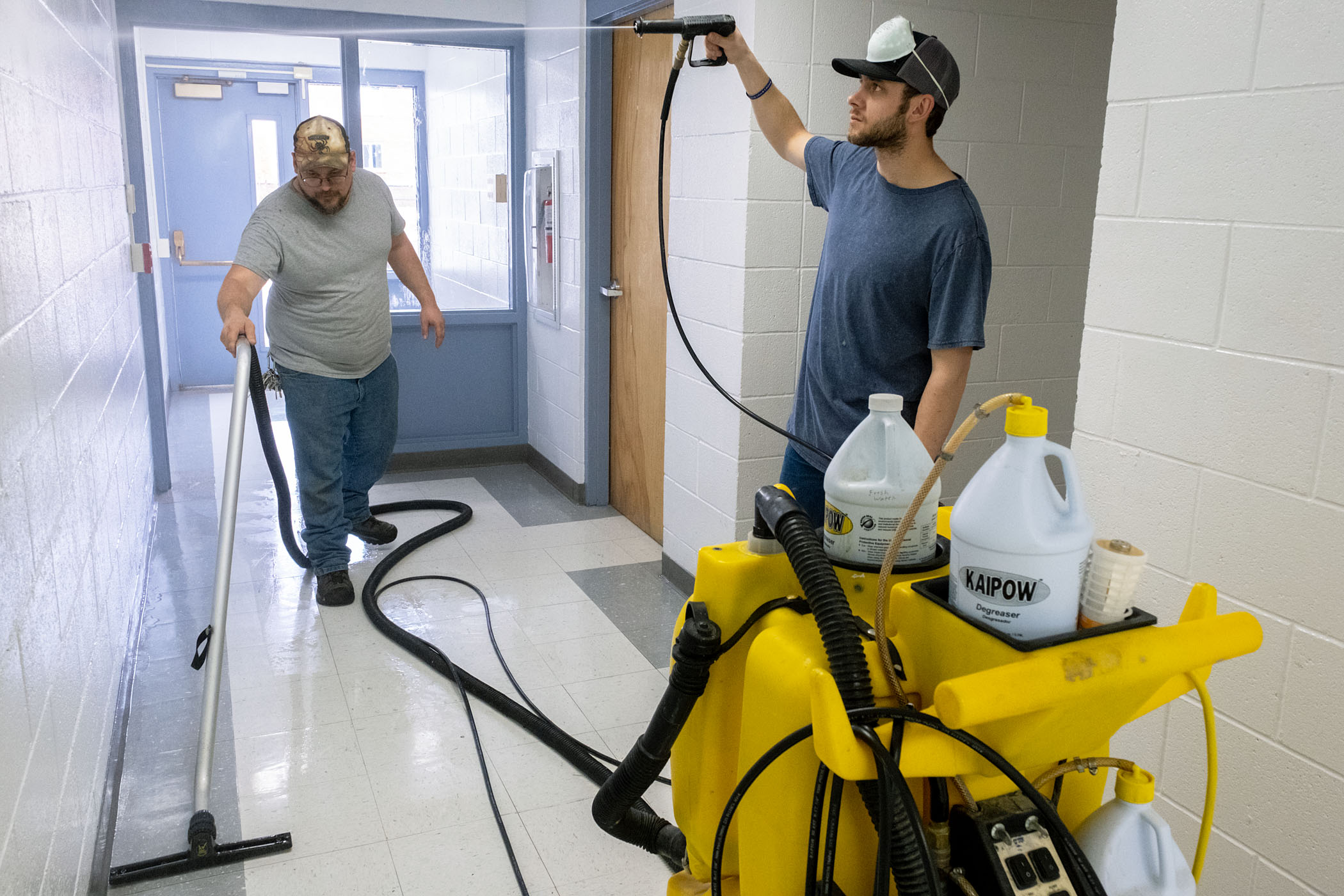
School Wednesday, March 18. They said the cleaning was nothing out of the ordinary,
other than the increased frequency they were doing it. (John Blodgett/Boulder Monitor)
Matt Bowman shuttled between the high school and Boulder Elementary; he’s the music and band teacher for both, and he had to be there for students to pick up instruments. For him, the shutdown presented an intriguing opportunity: He set up the SmartMusic app, which shows students their assigned music scores and then tracks how often they play, and for how long. “It’s something I’ve wanted to implement for a while,” he said. Students can record their assigned work, and Bowman can listen and grade online. Nothing like a global crisis to get kids to practice.
Bowman believes that keeping the sound alive is especially important right now. “That’s why I’m working so hard to figure this out,” he said. “For a lot of these kids, music is one of the things that helps them get through the day. Anything I can do to keep them playing, I’m willing to do that.”
WEDNESDAY, MARCH 18: Virtual School<
Virtual school was in session.
Specifically, Mary Williams’ ninth-grade physical-science class was in session. She started with a weekly lecture via Peardeck and Zoom, plus online office hours for optional one-to-one consults. “I use a lot of technology in my classes, anyway, so this wasn’t a big leap. I don’t know how to put emojis on emails, but I know how to use it in an education setting,” she said.
Her students seem OK with virtual learning—but “I prefer being in the classroom,” said Saraliba Auch, a sophomore. “It’s easier to get distracted working at home.”
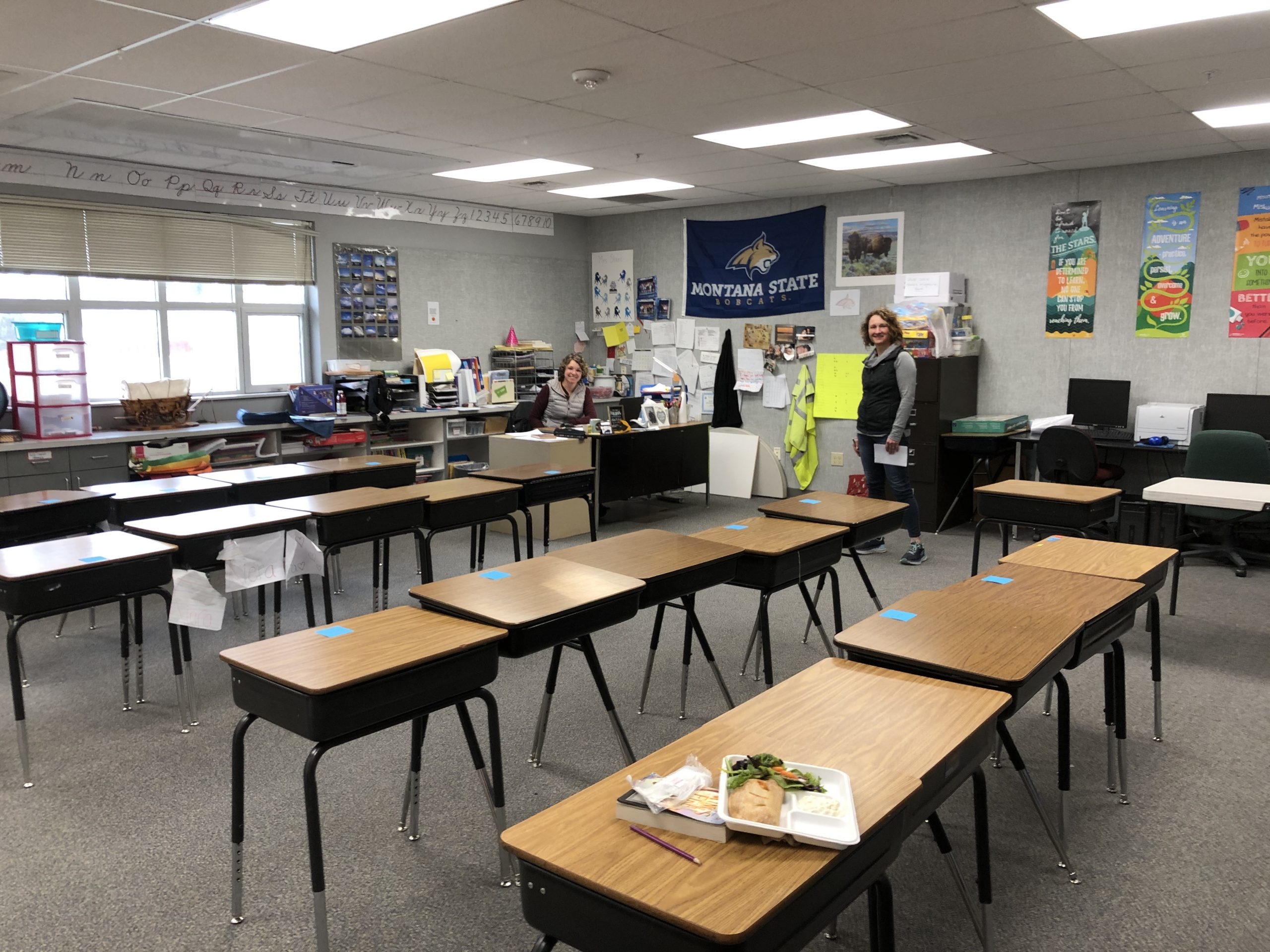
student-less Montana City School. (Photo courtesy Cori Trudeau)
It’s challenging to focus on computer-based lessons, freshman Quinne Schultz agreed. Plus there’s the problem of the video: For whatever adolescent reasons, no one wants to show their faces online.
“I do worry about some of the students,” Williams said. Although most are completing at least some online assignments, relatively few have shown up for the first lectures. She has emailed and called the kids she hasn’t heard from. “They need the structure of school. I worry, are they keeping that structure for themselves?”
For Kelsey Voeller, an English and journalism teacher at the high school, the paper packets posed the biggest challenge. She’s accustomed to organizing her classes into small student-led discussions with a lot of collaboration; a typical in-person session involves reading, a question and then an hour of student-led discussion.
“The discussion is 10 times better than anything I could give them, and the packets eliminate that,” she observed. “Packets are hard when you can’t hear or see them.”
At the Basin School, Listoe found herself on a string of calls with students and their parents, working through math problems that many parents don’t know how to solve, much less teach. “I get on the speaker with parent and child together,” she said. “The kid gives me problem they’re working on. Even though it’s not face-to-face, I get out a piece of paper, and as I’m working through the problem, I walk them through it. Hopefully, they’re doing it on paper, too, and the parents learn a bit about how to teach.”
Meanwhile, in the kitchen at Boulder Elementary, Kathleen Johnson and volunteer Keha McIlwaine prepared breakfasts and lunches for 70 kids. Earlier in the week, Food Service Manager Lisa Giulio and Rochelle Hesford, who runs after-school and summer programs, had applied to the Summer Food Service Program to allow the school to prepare summer meals two months early.
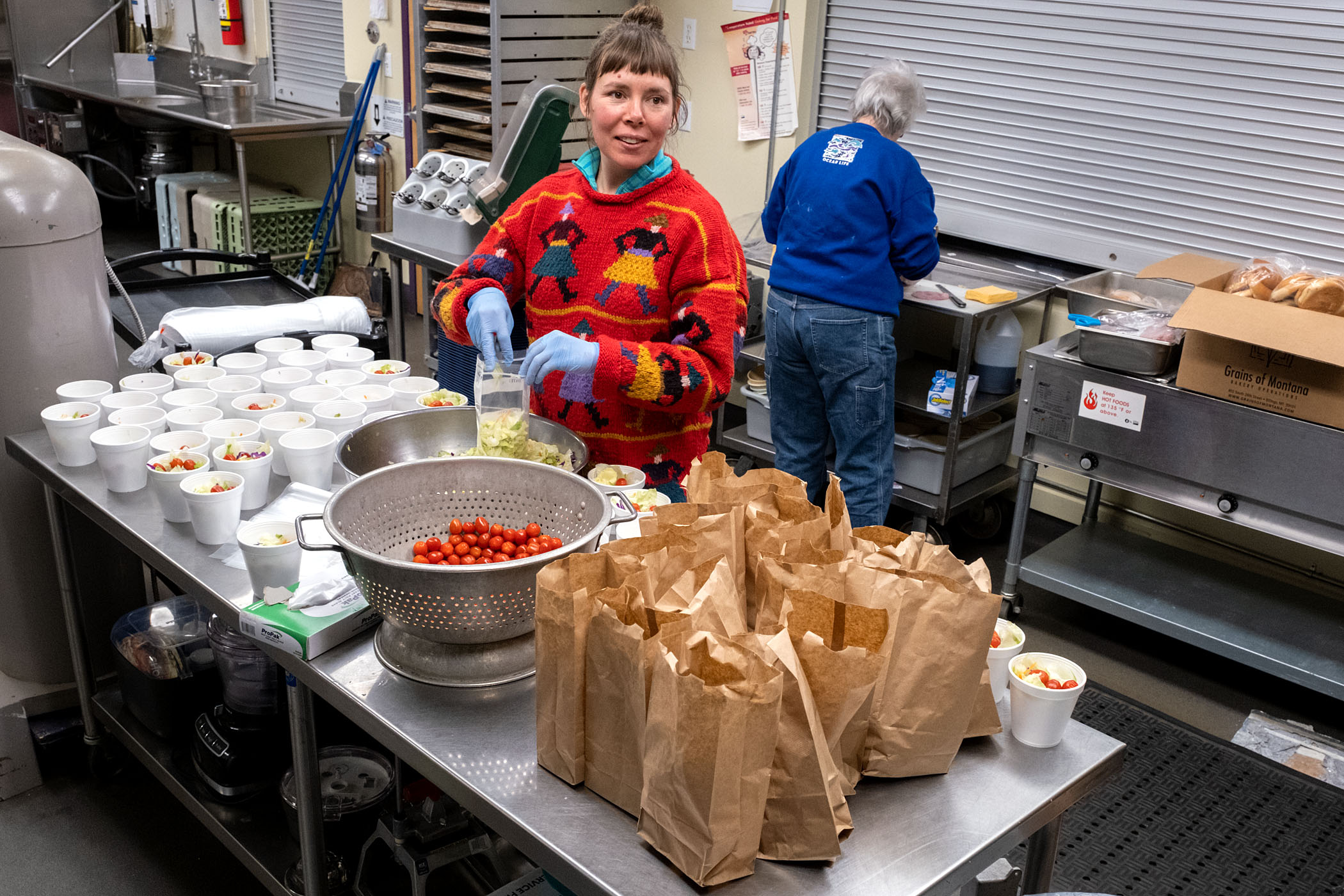
Elementary School Wednesday, March 18. (John Blodgett/Boulder Monitor)
That meant that any kid, regardless of income, could get free food during the closure: Bags were available for pick-up at the school’s gym door, and they were delivered to the Basin School and to high school students in the northern communities.
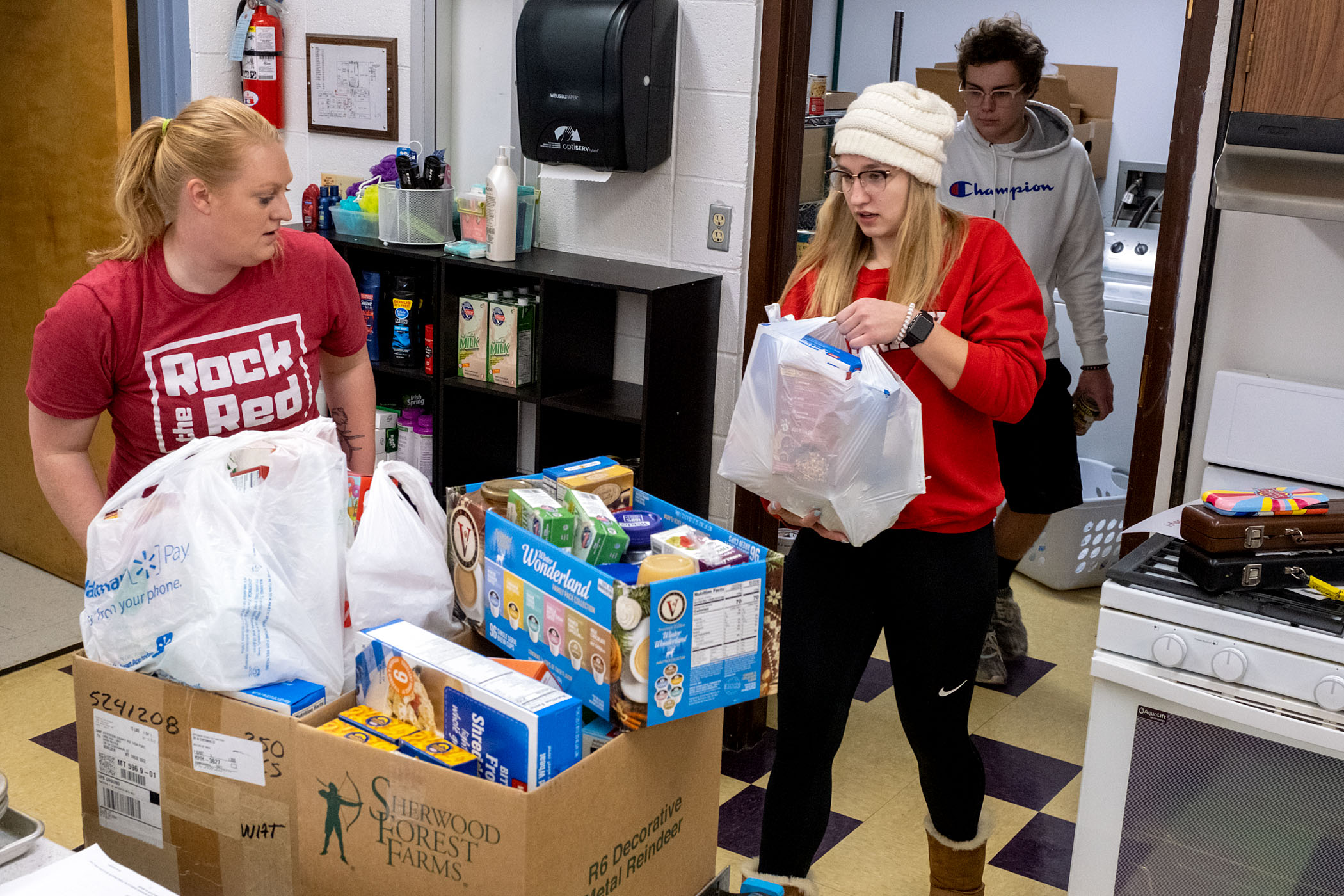
students Jadyn Bellander and Carson Pettis take items from the school’s food pantry for
delivery to area schools Wednesday, March 18. The pantry items would be made
available alongside the lunch bags being distributed to students, Parsons said. (John
Blodgett/Boulder Monitor)
Montana City School teachers sent parents suggested daily schedules for their kids. For first-graders, “academic time” came from 10 a.m. to 11 a.m. and then 1:30 p.m. to 3 p.m.; the rest of the day was for physical activity, creative pursuits and chores. (“Wipe down surfaces, pick up bedroom, help with dusting…”) Third-graders were told to make snowmen and send their teachers pictures.
The point was to relieve some of the pressure for parents so they don’t have to do everything. “Parents are being forced out of their routines, and kids pick up on their stress,” Trudeau said. “We need to help the parents, not put too much on them.”
But it’s also a reminder to teachers, Mikehell said: “Let’s be aware that kids are not able to work the seven hours a day that they would in a school environment. We told our staff, you should anticipate kids working a couple of hours a day, so there are some things you’re going to have to let go of.”
Verdict: ‘This Has Been Stressful’
How did it go? “Really, I’ve felt inundated,” Tim Norbeck said midweek. “It’s been really taxing, trying to develop answers to situations I’ve never thought of as a teacher or an administrator.”
Stephanie Listoe was more direct: “Oh, my, I have been a mess! This is my third year of teaching school, and they don’t teach you how to deal with this.”
“This has been stressful,” Jefferson High freshman Trinidy Boyce said. “I have family in other states that have [COVID-19]. And I’m kind of tired of being stuck in my room. School takes my mind off it a lot.”
Teachers were concerned about their students. “They’re pretty adaptable and resilient creatures,” Voeller noted. But they also thrive on the structure a school and a school day provide: seven hours when they know exactly what they’ll be doing, where and with whom. The social connections are important, too. (Don’t even ask about prom, which has been postponed.)
“It’s kind of funny,” David Heimann says. “When they’re in school, they complain about being there, and when they’re not, they wish they were. I think it’s been pretty hard on them.”
Soon, teachers and staff began fine-tuning their virtual instruction, applying what they had learned from their trial by fire. Matt Bowman experimented with ensemble play by Zoom: Saxophones at 10 a.m., then the trumpets, then jazz band and concert band. Voeller’s Honors English class used the video platform to return to student-led discussions. Heimann girded for the many emails he’d get from students in lieu of face-to-face exchanges.
“Honestly, it has been surreal,” Moodry said. “I was trying not to expect too much because it’s an extreme curve we have to climb. But to see how our students, our teachers, our staff have risen to the challenge, it’s beyond anything I could have comprehended.”
This solutions piece appeared in the Boulder (Montana) Monitor on March 24, 2020.
This story is part of the SoJo Exchange of COVID-19 stories from the Solutions Journalism Network, a nonprofit organization dedicated to rigorous reporting about responses to social problems.

